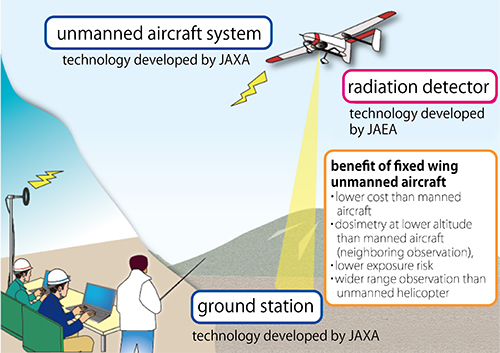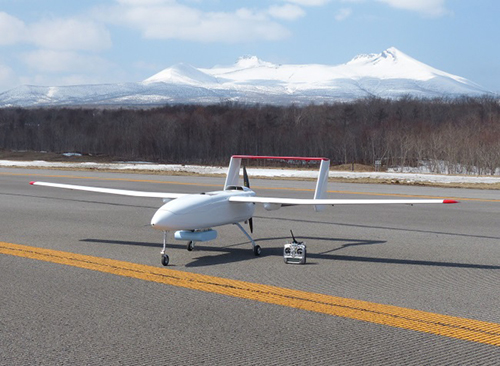Research & Development
JAXA promotes three research and development programs and a fundamental research program that underpins them.
Unmanned Airplane for Radiation Monitoring System (UARMS)
Topics
More
Since June 2012, JAXA, in cooperation with the Japan Atomic Energy Agency (JAEA) , has been conducting research and development on a small Unmanned Aerial Radiation Monitoring System (UARMS).
JAXA's research focuses on:
- Unmanned aerial vehicle (UAV) system design including on-board system redundancy
- System safety technologies for small unmanned aircraft system (UAS) operations
- Automatic flight control technologies for more precise radiation monitoring
JAEA's research focuses on:
- Aerial radiation monitoring methodologies using UAS
- Light and small radiation detector system
The research is being conducted to be used for radiation-monitoring missions in the restricted area of Fukushima in the near future.

Conceptual diagram of radiation monitoring

UARMS
| Dimensions | Length: 2.7 m, wingspan: 4.2 m |
|---|---|
| Max. takeoff weight / Payload | 50 kg / 3 to 10 kg |
| Power plant | Engine (gasoline) |
| Endurance | 6 hours (daytime) |
| Airspeed | 25 to 35 m/s (90 to 126 km/h) |
| Takeoff and landing distance | 200 to 300 m |
| Cruise Altitude | below 250m, to fly below minimum safety altitude of civil aircraft |
| Control | Programmed flight (including terrain-following mode) Manual take-off and landing |